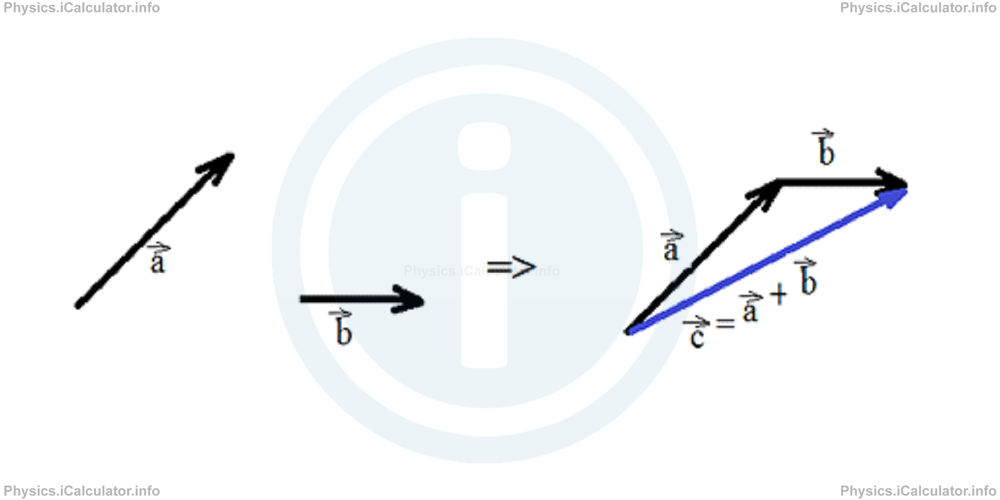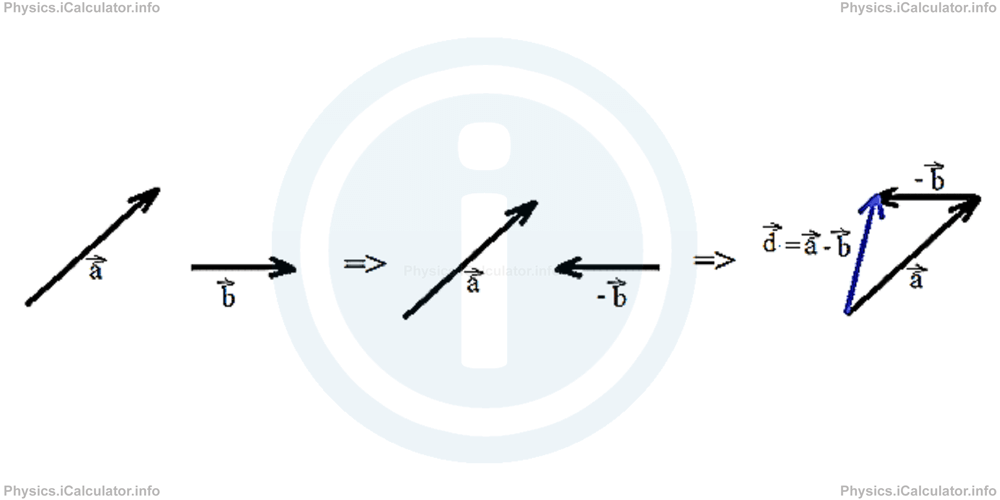Menu
Physics Lesson 2.2.3 - The Triangle (tip-to-tail) Rule
Please provide a rating, it takes seconds and helps us to keep this resource free for all to use
Welcome to our Physics lesson on The Triangle (tip-to-tail) Rule, this is the third lesson of our suite of physics lessons covering the topic of Addition and Subtraction of Vectors, you can find links to the other lessons within this tutorial and access additional physics learning resources below this lesson.
The Triangle (tip-to-tail) Rule
Basically, this rule consists on placing the tail of the second vector to the tip of the first one. Even if the vectors are distant, we can use the method of parallel transportation of these two vectors at a new place in which we can put them one after another as required. Look at the figure.

Figure 6. The Triangle Rule for the addition of vectors
Thus, if we have two vectors a⃗ and b⃗ and we apply the tip-to-tail rule as shown in the figure, the vector c⃗ which starts at the tail of the first vector a⃗ and ends to the tip of the second vector b⃗ represents the vector sum (resultant) of the two abovementioned vectors.
If we are asked to draw the vector difference d⃗ of the two vectors a⃗ and b⃗ shown in the above figure, we simply revert the second vector b⃗ and then apply the addition rules based on the algebraic law of subtraction
The figure will be as shown below:

Figure 7. The Triangle Rule for the subtraction of vectors
You have reach the end of Physics lesson 2.2.3 The Triangle (tip-to-tail) Rule. There are 5 lessons in this physics tutorial covering Addition and Subtraction of Vectors, you can access all the lessons from this tutorial below.
More Addition and Subtraction of Vectors Lessons and Learning Resources
Whats next?
Enjoy the "The Triangle (tip-to-tail) Rule" physics lesson? People who liked the "Addition and Subtraction of Vectors lesson found the following resources useful:
- Triangle Rule Feedback. Helps other - Leave a rating for this triangle rule (see below)
- Vectors and Scalars Physics tutorial: Addition and Subtraction of Vectors. Read the Addition and Subtraction of Vectors physics tutorial and build your physics knowledge of Vectors and Scalars
- Vectors and Scalars Video tutorial: Addition and Subtraction of Vectors. Watch or listen to the Addition and Subtraction of Vectors video tutorial, a useful way to help you revise when travelling to and from school/college
- Vectors and Scalars Revision Notes: Addition and Subtraction of Vectors. Print the notes so you can revise the key points covered in the physics tutorial for Addition and Subtraction of Vectors
- Vectors and Scalars Practice Questions: Addition and Subtraction of Vectors. Test and improve your knowledge of Addition and Subtraction of Vectors with example questins and answers
- Check your calculations for Vectors and Scalars questions with our excellent Vectors and Scalars calculators which contain full equations and calculations clearly displayed line by line. See the Vectors and Scalars Calculators by iCalculator™ below.
- Continuing learning vectors and scalars - read our next physics tutorial: Multiplication of a Vector by a Scalar
Help others Learning Physics just like you
Please provide a rating, it takes seconds and helps us to keep this resource free for all to use
We hope you found this Physics lesson "Addition and Subtraction of Vectors" useful. If you did it would be great if you could spare the time to rate this physics lesson (simply click on the number of stars that match your assessment of this physics learning aide) and/or share on social media, this helps us identify popular tutorials and calculators and expand our free learning resources to support our users around the world have free access to expand their knowledge of physics and other disciplines.